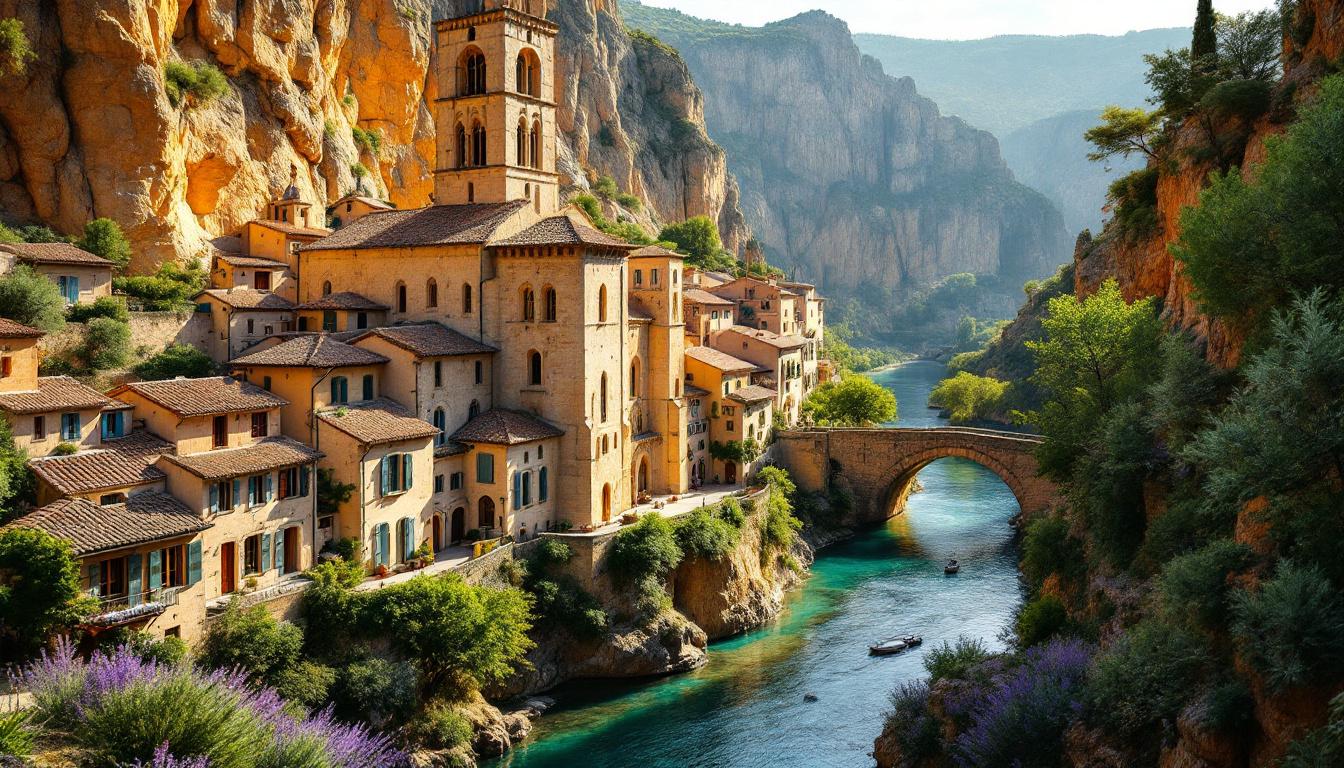Deep in the limestone gorges of southern France, where the Hérault River carves through ancient cliffs, sits a medieval sanctuary that its 243 residents wish would remain their secret forever. Saint-Guilhem-le-Désert isn’t just another picturesque French village—it’s a UNESCO World Heritage site that locals actively protect from the pilgrim crowds that could easily overwhelm their cobblestone streets.
The villagers have good reason to guard their tranquility. This tiny commune, smaller than Manhattan’s Central Park at just 38.6 square kilometers, sits directly on the ancient Camino de Santiago pilgrimage route. With over 499,000 pilgrims completing the Camino in 2024 alone, the potential for overtourism looms large over every medieval stone.
Yet through careful community stewardship and protective tourism policies, the people of “Sant Guilhèm”—as locals call it in the traditional Occitan language—have managed to preserve something increasingly rare: an authentic medieval village where time genuinely stands still.
How 243 residents control access to their medieval world
The parking strategy that keeps tour buses away
Walk through Saint-Guilhem-le-Désert on any August morning, and you’ll notice something remarkable: no massive tour buses clogging the narrow streets. The village achieves this through strategic parking restrictions that prioritize individual travelers over mass tourism. Motorhomes and large vehicles face significantly higher parking fees, while free shuttle buses transport visitors from distant parking areas to protect the medieval center.
Local guidelines that preserve the sacred atmosphere
The community has established unwritten cultural protocols that regular visitors quickly learn to respect. Inside the 12th-century Gellone Abbey, silence isn’t just requested—it’s essential to maintaining the contemplative atmosphere that has drawn pilgrims for nearly a millennium. Local shopkeepers gently guide tourists toward understanding the difference between a living village and a theme park, ensuring that daily life continues alongside respectful tourism.
The abbey sanctuary pilgrims discover by accident
Romanesque architecture that survives untouched
Most pilgrims following the Via Podiensis route stumble upon Saint-Guilhem-le-Désert expecting a brief rest stop, only to discover France’s most perfectly preserved Romanesque abbey. The Gellone Abbey houses original stonework from 1076, with an 18th-century organ by Jean-Pierre Cavaillé that still fills the sanctuary with haunting medieval melodies during special ceremonies.
The cloistered courtyard where time stops
Behind the abbey’s massive wooden doors lies a reconstructed cloister where carved capitals tell stories in stone that predate the printing press by centuries. Local guides—many of them former pilgrims who chose to stay—share knowledge passed down through generations about the symbolic meanings hidden in every archway and column.
Natural protection that tourism can’t penetrate
Gorge access that requires local knowledge
The village’s most stunning secrets lie beyond the medieval walls, in limestone gorges accessible only through unmarked trails known to residents. The Cirque de l’Infernet, a hidden amphitheater of towering cliffs, remains invisible to casual visitors but rewards those who seek guidance from local hiking experts with scenes of untouched natural drama.
River pools hidden from guidebook pages
While day-trippers cluster around the famous Devil’s Bridge (Pont du Diable), locals slip away to secret swimming holes carved by centuries of flowing water through the Hérault gorges. These natural pools, accessible only by following ancient shepherds’ paths, offer the kind of discovery that makes pilgrims understand why some choose never to leave.
Preservation efforts that outsiders rarely see
Artisan workshops maintaining medieval crafts
In workshops tucked behind the main street, cork artisans and potters continue traditions that date back to the village’s founding. These craftspeople, supported by community initiatives, create authentic pieces that connect visitors to the region’s cultural heritage while providing sustainable livelihoods that don’t depend on mass tourism.
Cultural festivals designed for locals first
The village’s most meaningful celebrations happen on the local calendar, not the tourist one. Medieval music festivals and harvest celebrations in early autumn draw neighboring communities together, offering visitors who time their journeys carefully glimpses of authentic cultural continuity that package tours never access.
Saint-Guilhem-le-Désert proves that some places still prioritize preservation over profit. The village’s 243 residents have created a delicate balance—welcoming respectful pilgrims while protecting the authentic medieval atmosphere that makes their home irreplaceable.
Visit during shoulder seasons when locals have time to share their stories, respect the contemplative atmosphere they’ve carefully maintained, and remember that the greatest discoveries often come to those who approach sacred places with humility rather than cameras.
